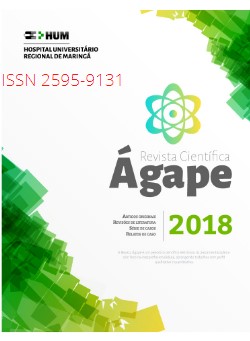Incidence and risk factors for deep vein thrombosis in an Universitary Hospital
Main Article Content
Resumo
Objetives: Evaluate patients profile admitted with suspected venous
thromboembolism of an university hospital from August/2015 to July/2016 and describe
the therapeutic used. Methods: 42 patients was admitted with clinic suspected and
verifying their confirmation by complementary exams. Epidemiological profile and
treatment was analyzed. Results: 20 patients with diagnose confirmation formed group
A, and group B by 22 patients without confirmation. Group A had 51,65 years old
average, being half female. Obesity was most common risk factor (30%) on this group
followed by varicose veins and infection (25%). The most frequent treatment observed
was low molecular weight heparin plus warfarin (55%). Conclusion: It´s needed to make
a prospective study about risk factors to take out some bias about lack of active research
and failure in recording data. It´s important to extend the number of patients in the study
and develop a protocol to standardize diagnose and treatment at this service.
Downloads
Article Details
Declaro que o presente artigo é original, não tendo sido submetido à publicação em qualquer outro periódico nacional ou internacional, quer seja em parte ou em sua totalidade.
Os direitos autorais pertencem exclusivamente aos autores. Os direitos de licenciamento utilizados pelo periódico é a licença Creative Commons Attribution 4.0 (CC BY NC 4.0): são permitidos o compartilhamento (cópia e distribuição do material em qualquer suporte ou formato) e adaptação (remix, transformação e criação de material a partir do conteúdo assim licenciado para fins não comerciais
Recomenda-se a leitura desse link para maiores informações sobre o tema: fornecimento de créditos e referências de forma correta, entre outros detalhes cruciais para uso adequado do material licenciado.

